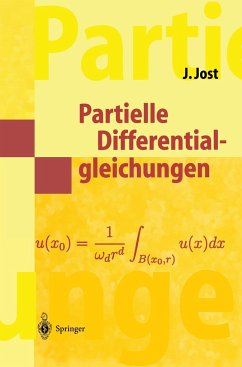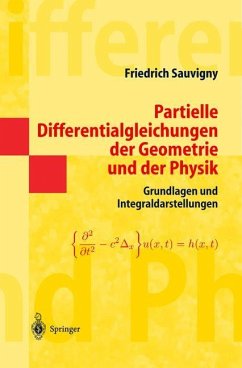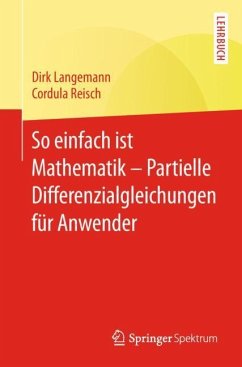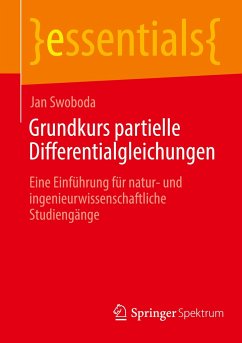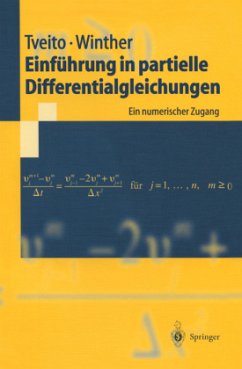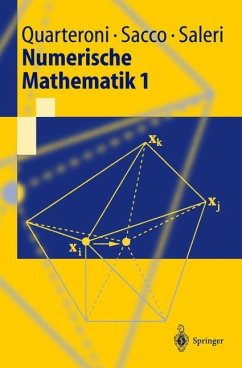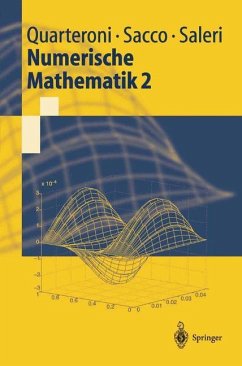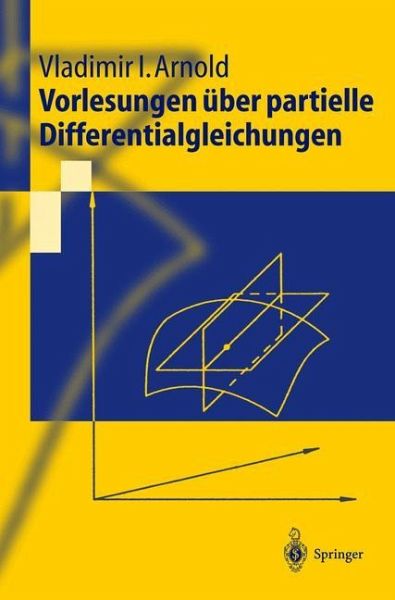
Vorlesungen über partielle Differentialgleichungen

PAYBACK Punkte
0 °P sammeln!
Nach seinem bekannten und viel verwendeten Buch über gewöhnliche Differentialgleichungen widmet sich der berühmte Mathematiker Vladimir Arnold nun den partiellen Differentialgleichungen in einem neuen Lehrbuch. In seiner unnachahmlich eleganten Art führt er über einen geometrischen, anschaulichen Weg in das Thema ein, und ermöglicht den Lesern so ein vertieftes Verständnis der Natur der partiellen Differentialgleichungen. Für Studierende der Mathematik und Physik ist dieses Buch ein Muss.Wie alle Bücher Vladimir Arnolds ist dieses Buch voller geometrischer Erkenntnisse. Arnold illustr...
Nach seinem bekannten und viel verwendeten Buch über gewöhnliche Differentialgleichungen widmet sich der berühmte Mathematiker Vladimir Arnold nun den partiellen Differentialgleichungen in einem neuen Lehrbuch. In seiner unnachahmlich eleganten Art führt er über einen geometrischen, anschaulichen Weg in das Thema ein, und ermöglicht den Lesern so ein vertieftes Verständnis der Natur der partiellen Differentialgleichungen. Für Studierende der Mathematik und Physik ist dieses Buch ein Muss.
Wie alle Bücher Vladimir Arnolds ist dieses Buch voller geometrischer Erkenntnisse. Arnold illustriert jeden Grundsatz mit einer Abbildung. Das Buch behandelt die elementarsten Teile des Fachgebiets and beschränkt sich hauptsächlich auf das Cauchy-Problem und das Neumann-Problems für die klassischen Lineargleichungen der mathematischen Physik, insbesondere auf die Laplace-Gleichung und die Wellengleichung, wobei die Wärmeleitungsgleichung und die Korteweg-de-Vries-Gleichung aber ebenfalls diskutiert werden. Die physikalische Intuition wird besonders hervorgehoben. Eine große Anzahl von Problemen ist übers ganze Buch verteilt, und ein ganzer Satz von Aufgaben findet sich am Ende.
Was dieses Buch so einzigartig macht, ist das besondere Talent Arnolds, ein Thema aus einer neuen, frischen Perspektive zu beleuchten. Er lüftet gerne den Schleier der Verallgemeinerung, der so viele mathematische Texte umgibt, und enthüllt die im wesentlichen einfachen, intuitiven Ideen, die dem Thema zugrunde liegen. Das kann er besser als jeder andere mathematische Autor.
Wie alle Bücher Vladimir Arnolds ist dieses Buch voller geometrischer Erkenntnisse. Arnold illustriert jeden Grundsatz mit einer Abbildung. Das Buch behandelt die elementarsten Teile des Fachgebiets and beschränkt sich hauptsächlich auf das Cauchy-Problem und das Neumann-Problems für die klassischen Lineargleichungen der mathematischen Physik, insbesondere auf die Laplace-Gleichung und die Wellengleichung, wobei die Wärmeleitungsgleichung und die Korteweg-de-Vries-Gleichung aber ebenfalls diskutiert werden. Die physikalische Intuition wird besonders hervorgehoben. Eine große Anzahl von Problemen ist übers ganze Buch verteilt, und ein ganzer Satz von Aufgaben findet sich am Ende.
Was dieses Buch so einzigartig macht, ist das besondere Talent Arnolds, ein Thema aus einer neuen, frischen Perspektive zu beleuchten. Er lüftet gerne den Schleier der Verallgemeinerung, der so viele mathematische Texte umgibt, und enthüllt die im wesentlichen einfachen, intuitiven Ideen, die dem Thema zugrunde liegen. Das kann er besser als jeder andere mathematische Autor.






